Abstract
Large forms of Selenomonas sp. were isolated from the sheep rumen on a rumen fluid-glucose-agar medium by using a differential centrifugation technique to purify the inoculum. The cells from the six isolated strains were curved, gram-negative, strictly anaerobic crescents, and rapidly motile by flagella attached to the concave side of the cell. One or more of the volatile fatty acids were essential for growth. None of the strains produced indole or reduced nitrate. All strains grew on fructose, glucose, mannose, cellobiose, maltose, sucrose, and salicin. Fermentation end products from glucose were mainly lactate, acetate, propionate, and formate. Small amounts of succinate were formed. The final pH in a glucose medium ranged between 4.3 and 4.5. On the basis of the sugar fermentation characteristics and the capacity to form hydrogen sulfide from cysteine, it is suggested that one of the strains is a large form of Selenomonas ruminantium. The other five strains are designated S. ruminantium var. bryanti, var. n.
Full text
PDF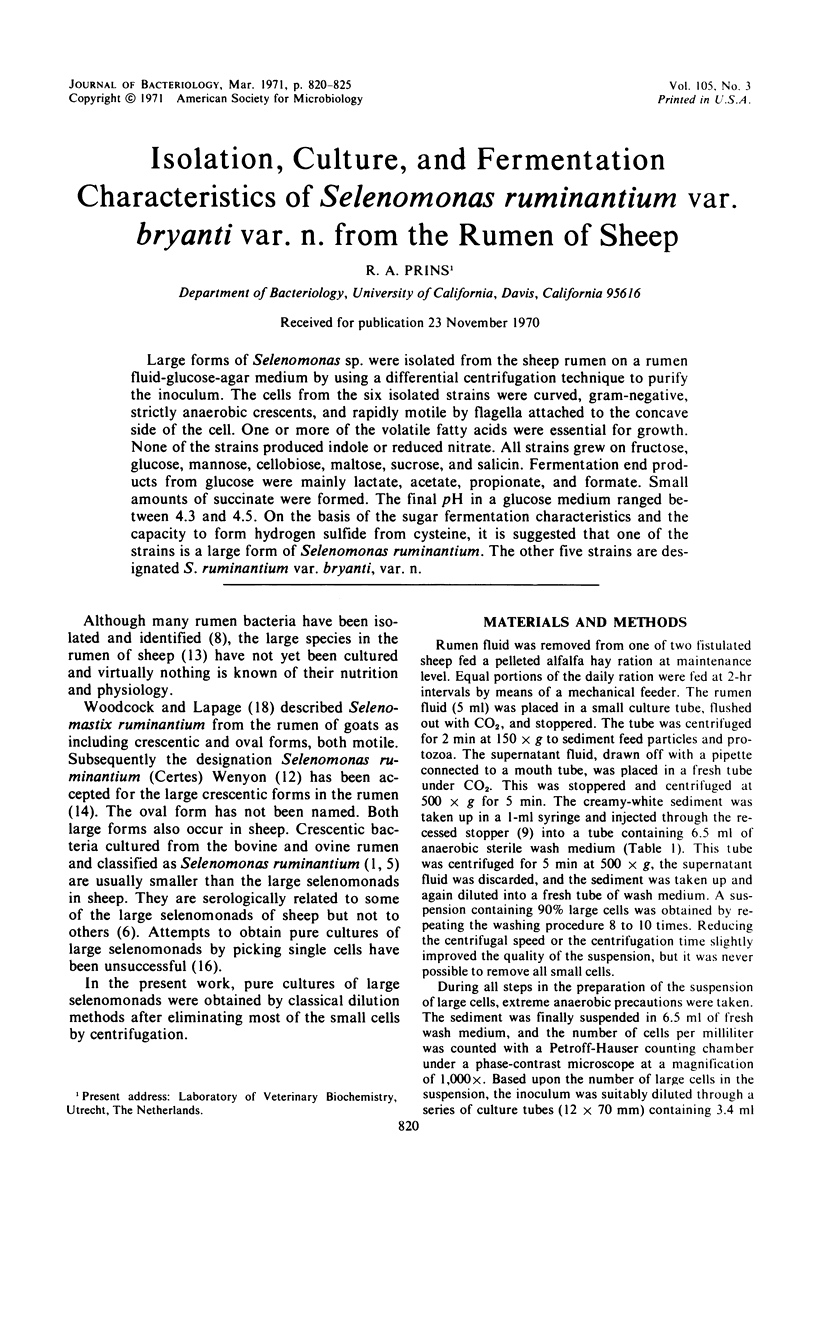
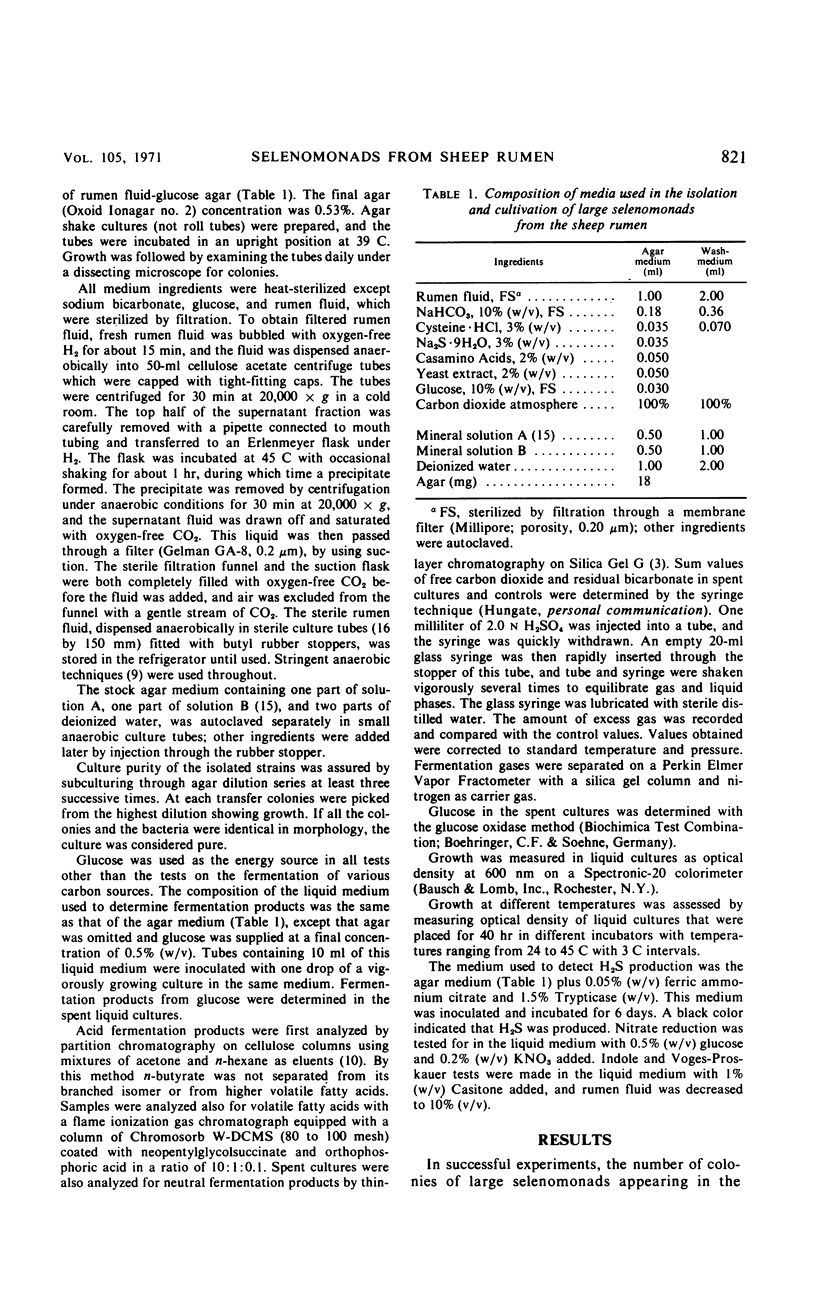
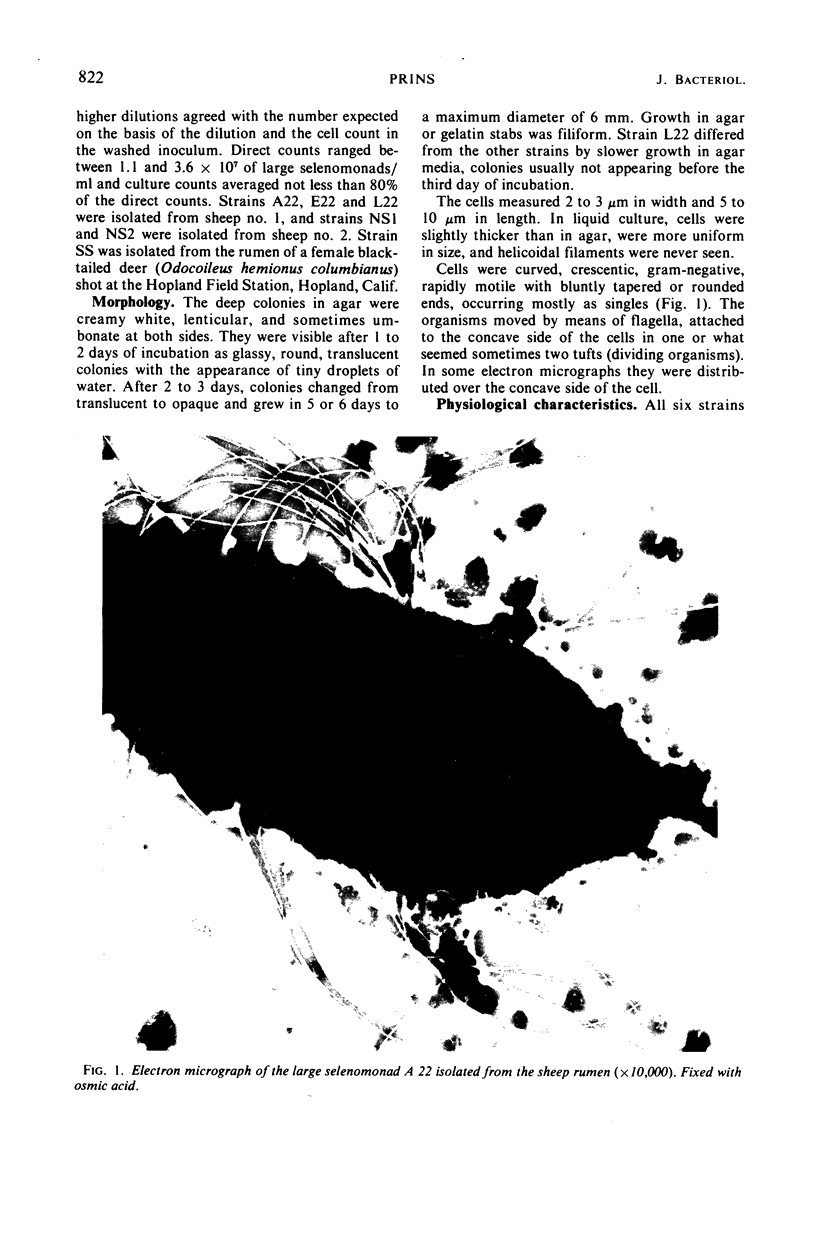
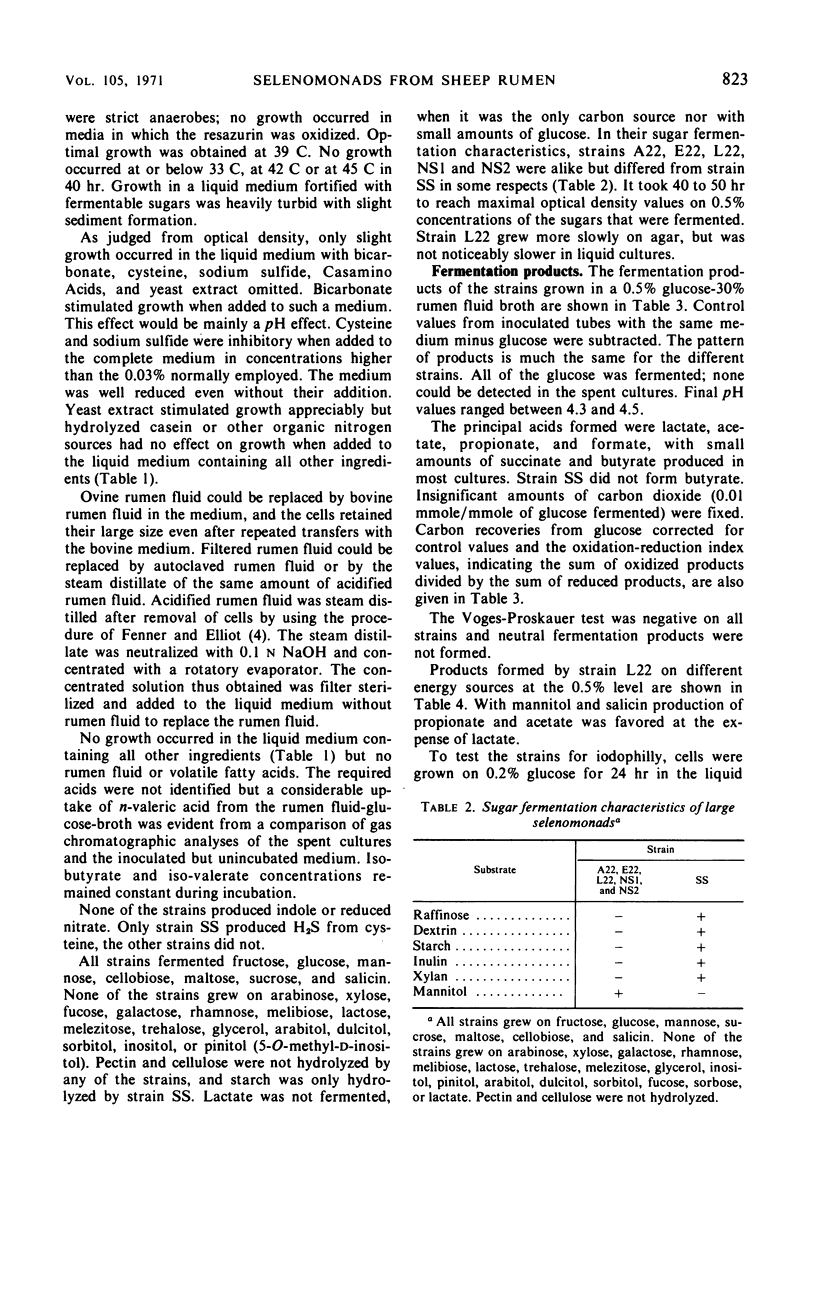
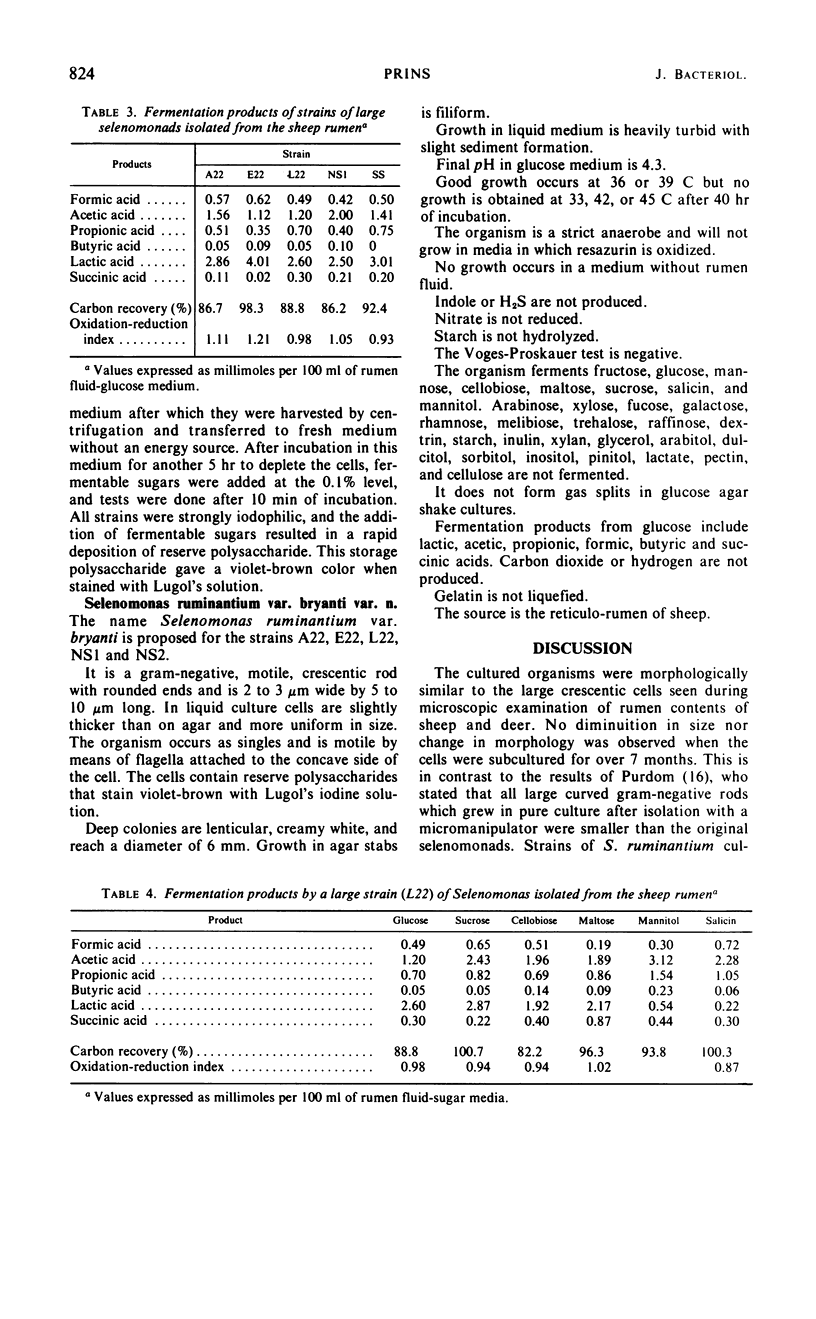
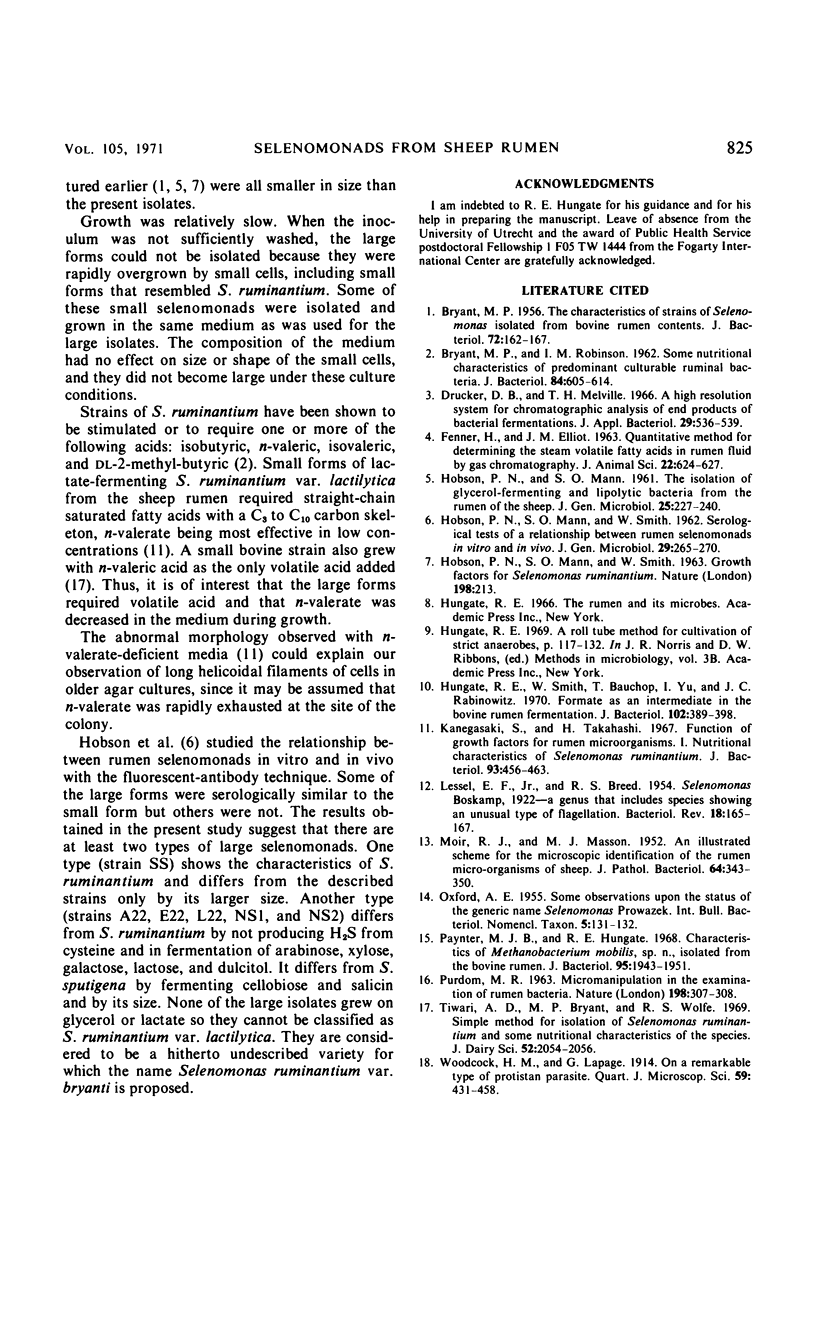
Images in this article
Selected References
These references are in PubMed. This may not be the complete list of references from this article.
- BRYANT M. P., ROBINSON I. M. Some nutritional characteristics of predominant culturable ruminal bacteria. J Bacteriol. 1962 Oct;84:605–614. doi: 10.1128/jb.84.4.605-614.1962. [DOI] [PMC free article] [PubMed] [Google Scholar]
- BRYANT M. P. The characteristics of strains of Selenomonas isolated from bovine rumen contents. J Bacteriol. 1956 Aug;72(2):162–167. doi: 10.1128/jb.72.2.162-167.1956. [DOI] [PMC free article] [PubMed] [Google Scholar]
- Drucker D. B., Melville T. H. A high resolution system for chromatographic analysis of end products of bacterial fermentations. J Appl Bacteriol. 1966 Dec;29(3):536–539. doi: 10.1111/j.1365-2672.1966.tb03505.x. [DOI] [PubMed] [Google Scholar]
- HOBSON P. N., MANN S. O., SMITH W. Growth factors for Selenomonas ruminantium. Nature. 1963 Apr 13;198:213–213. doi: 10.1038/198213a0. [DOI] [PubMed] [Google Scholar]
- HOBSON P. N., MANN S. O., SMITH W. Serological tests of a relationship between rumen selenomonads in vitro and in vivo. J Gen Microbiol. 1962 Oct;29:265–270. doi: 10.1099/00221287-29-2-265. [DOI] [PubMed] [Google Scholar]
- HOBSON P. N., MANN S. O. The isolation of glycerol-fermenting and lipolytic bacteria from the rumen of the sheep. J Gen Microbiol. 1961 Jun;25:227–240. doi: 10.1099/00221287-25-2-227. [DOI] [PubMed] [Google Scholar]
- Hungate R. E., Smith W., Bauchop T., Yu I., Rabinowitz J. C. Formate as an intermediate in the bovine rumen fermentation. J Bacteriol. 1970 May;102(2):389–397. doi: 10.1128/jb.102.2.389-397.1970. [DOI] [PMC free article] [PubMed] [Google Scholar]
- Kanegasaki S., Takahashi H. Function of growth factors for rumen microorganisms. I. Nutritional characteristics of Selenomonas ruminantium. J Bacteriol. 1967 Jan;93(1):456–463. doi: 10.1128/jb.93.1.456-463.1967. [DOI] [PMC free article] [PubMed] [Google Scholar]
- LESSEL E. F., Jr, BREED R. S. Selenomonas Boskamp, 1922; a genus that includes species showing an unusual type of flagellation. Bacteriol Rev. 1954 Sep;18(3):165–168. doi: 10.1128/br.18.3.165-169.1954. [DOI] [PMC free article] [PubMed] [Google Scholar]
- MOIR R. J., MASSON M. J. An illustrated scheme for the microscopic identification of the rumen microorganisms of sheep. J Pathol Bacteriol. 1952 Apr;64(2):343–350. doi: 10.1002/path.1700640210. [DOI] [PubMed] [Google Scholar]
- Paynter M. J., Hungate R. E. Characterization of Methanobacterium mobilis, sp. n., isolated from the bovine rumen. J Bacteriol. 1968 May;95(5):1943–1951. doi: 10.1128/jb.95.5.1943-1951.1968. [DOI] [PMC free article] [PubMed] [Google Scholar]



